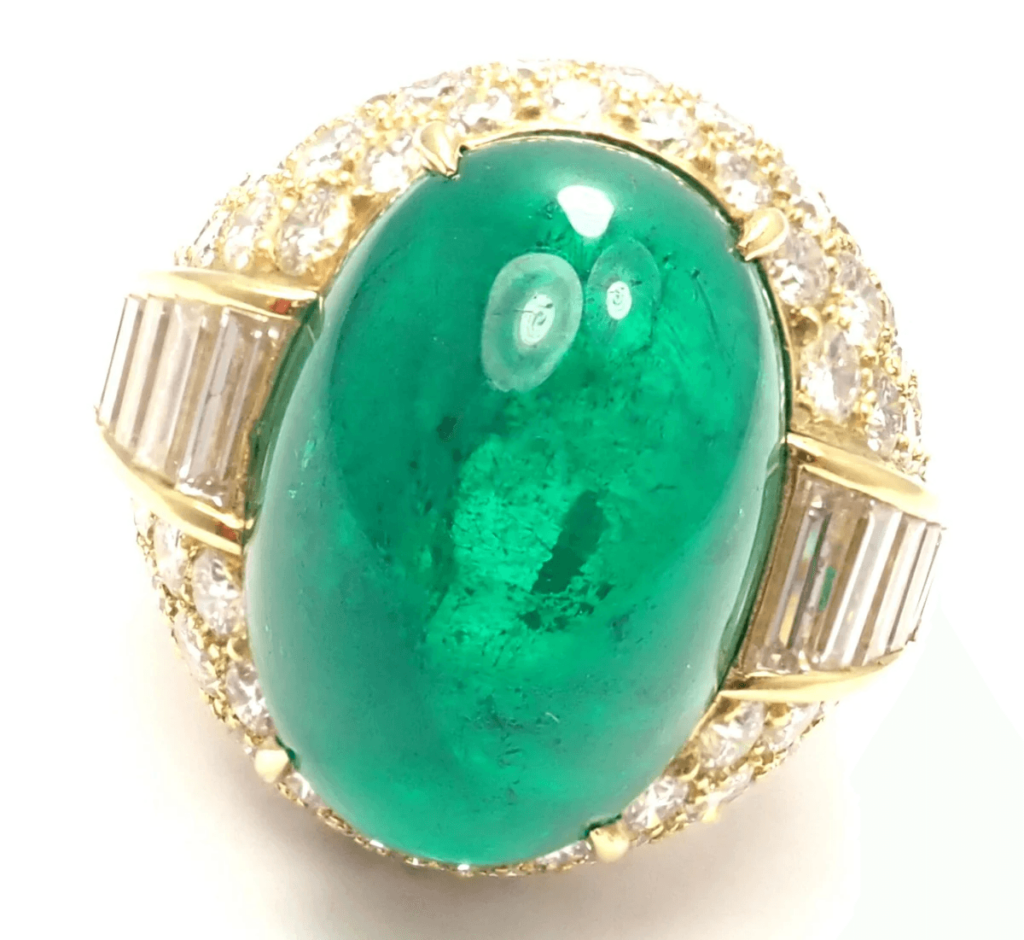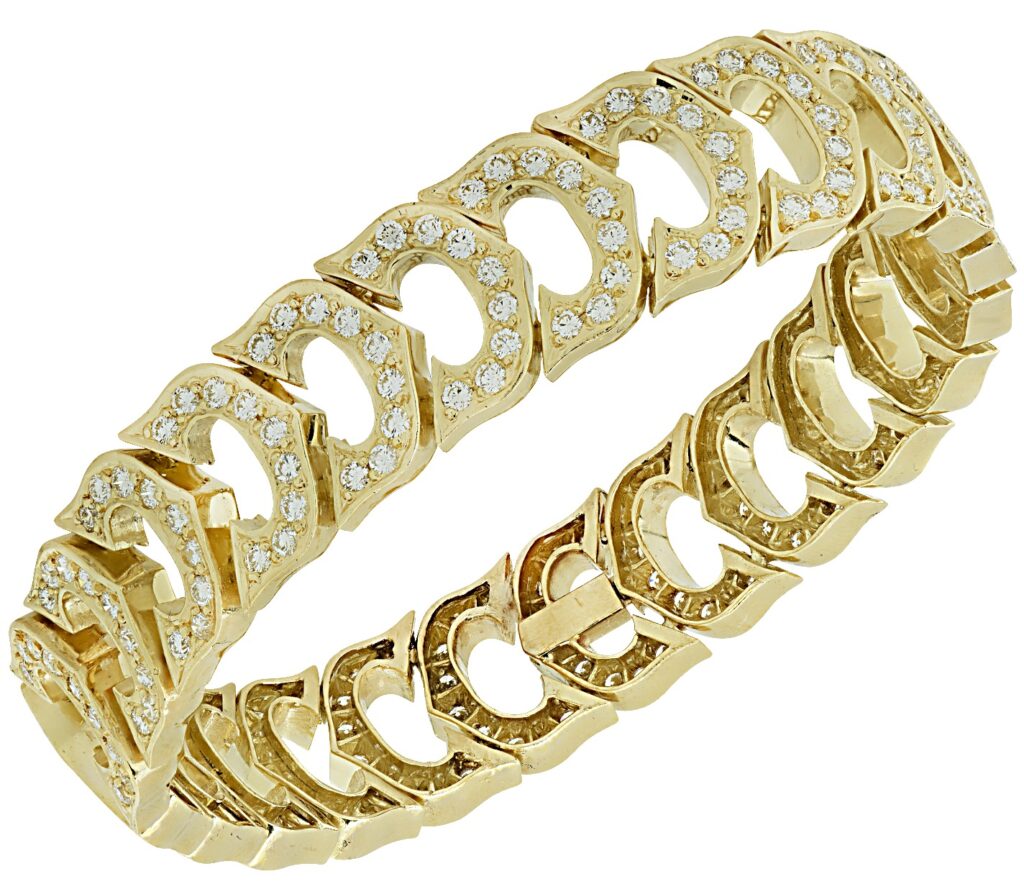Reaganomics, New Conservatism, Wall Street, Yuppies, Preppies, Cable TV, MTV, Rap, Punk Rock, New Wave, New Age, Iran-Contra, Logomania, Princess Diana and anything big all defined the 1980s.
When: 1980-1989 The 1980s was a time of contrasts and individuality. It was a decade of big — big hair, big shoulders, big money. Wall street was taking off creating unprecedented wealth while CEO’s received huge paychecks. Young urban professionals known as “Yuppies”, who were educated with upwardly mobile jobs had money to spend and they did so lavishly. Cable TV was introduced and MTV brought music and fashion into our living rooms. The influence of music on fashion was huge as Cindy Lauper and Madonna flounced around in corsets and petticoats making underwear as outwear subversively chic. Women were on the rise professionally, taking on c-suite jobs and for the first time, the number of women enrolled in college outnumbered men.
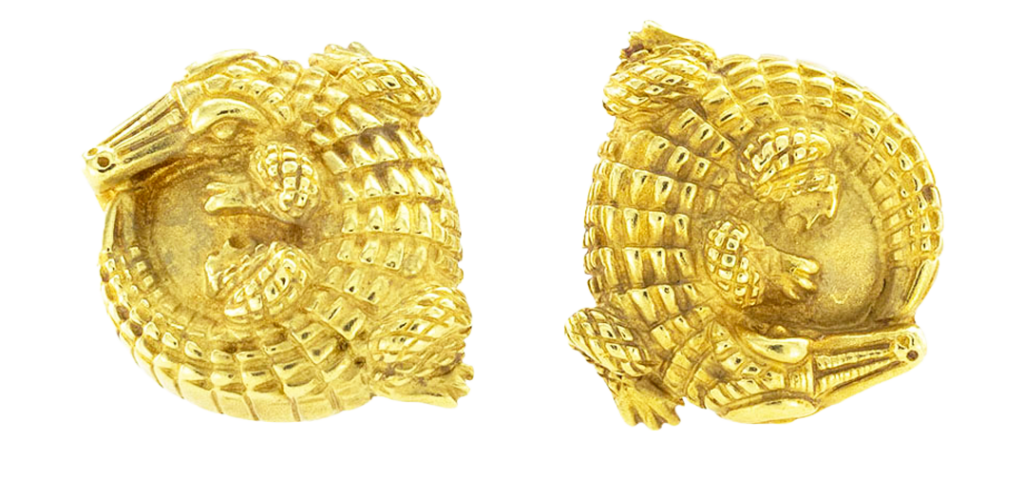
Famous Makers: Marina B., Henry Dunay, Barry Kieselstein-Cord, Paloma Picasso, Bulgari, Elizabeth Gage, Elizabeth Locke, Cartier, Tiffany & Co., Van Cleef & Arpels
Motifs: Florals, Geometrics, Triangles, Rectangles, Stars, Oversized, Cabochons, Textured Metals, Panthers, Reptiles, Invisible Settings
The Look: Big, Colorful and Over-the-Top Opulence, Bold Gold, Diamond Pavé, Mixed Metals, Square Shaped Diamonds, Dramatic, Big Hoops, Big Earrings, Chain Link Necklaces and Bracelets, Tennis Bracelet, Stacking Rings, Brooches, Chokers
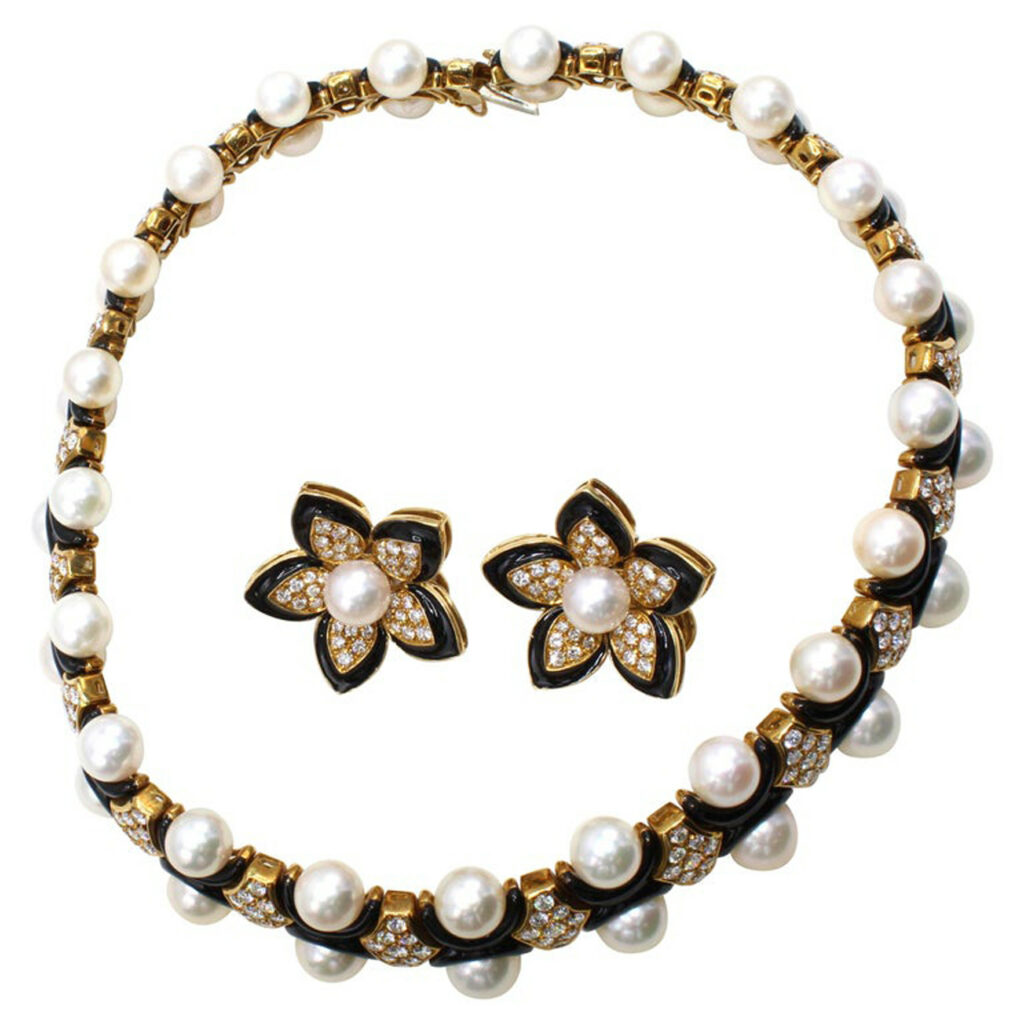
Materials: Pearls, Sapphires in all colors, especially blue, Garnet, Tourmaline, Amethyst, Citrine, Blue Topaz, Tanzanite, Gold, Silver, Platinum
The 1980s kicked off with Ronald Reagan elected as President and remaining so through the decade. He brought his “new conservatism” and trickle-down theory of economics with him. It was a decade that saw an unprecedented uptick in wealth brought on by the rise of Wall Street and a soaring stock market. During the “go-go” 1980s, there was a lot of money floating around and Yuppies, the young, upwardly mobile white collar professionals many of whom worked in banking and finance spent lavishly on the finer things in life. It was the era that craved designer labels giving birth to logomania. Princess Diana, Brooke Shields, Madonna and Cindy Lauper were fashion icons of the decade, each one bringing her own personal style to the party that was the 1980s.
There were four distinct fashion movements in the 1980s as individuality and self-expression became more important than ever. Jewelry for each of these movements shared one thing in common: It was big, bold and maximalist.
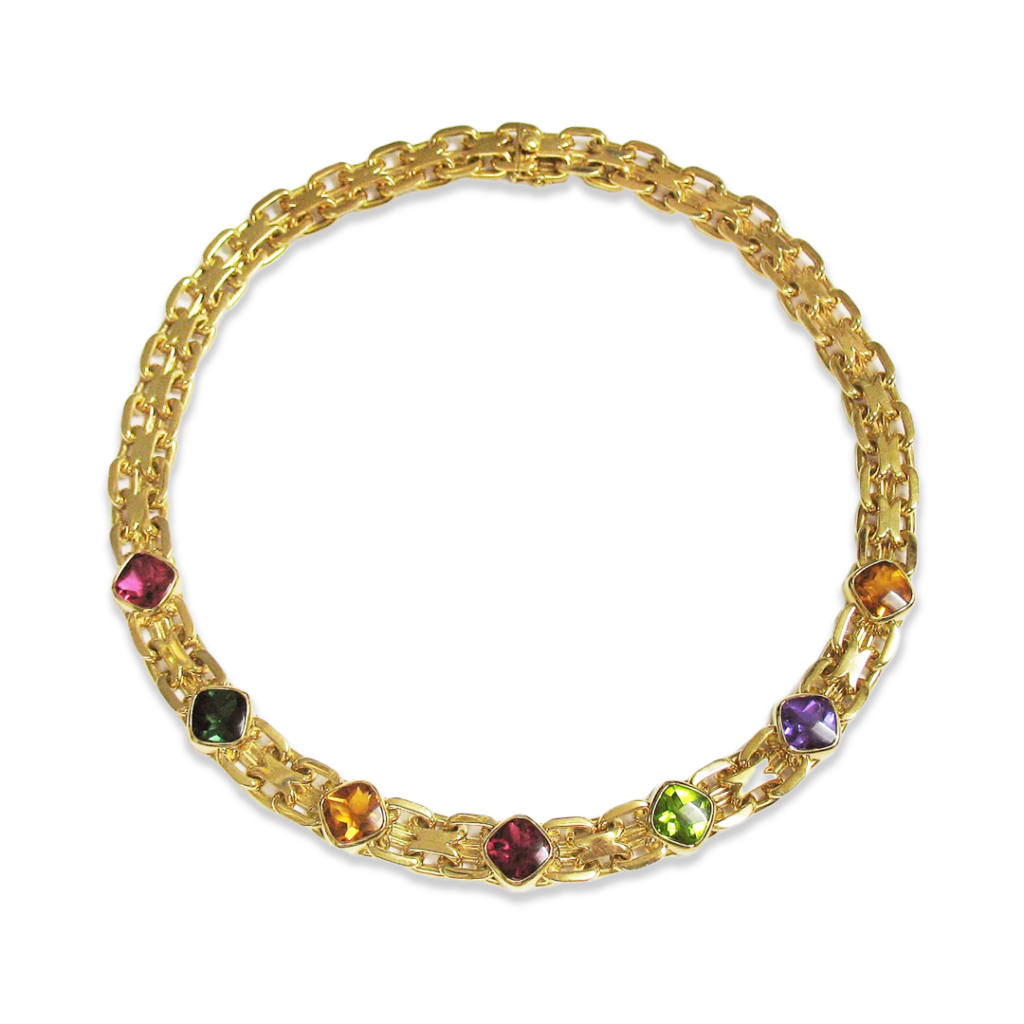
During the previous decade more women had been entering the workforce and this movement exploded in the 1980s as women were not only working more outside of the home, but they were in management and executive positions. To reflect their new found status in the workplace, women adopted the power suit, characterized by jackets with big padded shoulders often embellished with gold-tone buttons, sometimes worn with a belt; a simple skirt completed the suit. The look was finished off with pointy-toed stilettos and big hair, the whole look was dramatic and bold sending the message that women meant business. Women wanted jewelry to add another layer of power to their outfits and with better paying more important jobs women had their own money to purchase jewelry that reflected their personal style and complemented their wardrobe.

Big, bold gold was the mantra and choker length gold chains, sometimes embellished with colored gemstones was part of the uniform along with oversized earrings often doorknocker or button styles. A stack of bracelets or a large cuff and ring were also part of the style. Pearls were a big part of power dressing and pearl chokers, often multistrand, were popular. Designer Marina B. catered to these working women with colorful jewelry that was easy to wear and made a big statement that complemented the clothing styles of the era. And designer Henry Dunay was making his mark with his textured bold gold jewelry that showcased oversized colored gemstones. Colored gemstones got another big boost, when England’s Prince Charles (now King Charles) proposed to Lady Diana Spencer, who when married became Princess Diana, with a sapphire and diamond ring, encouraging women to look beyond diamonds for an engagement ring.
A more understated look in the 1980s was the Preppy style. It consisted of the Ivy League college look of a white shirt, khaki pants, or skirt, and a sweater. People who were into this style favored simple gold jewelry — hoop earrings, a gold or designer watch and a simple gold chain necklace or a pearl strand. The gold Rolex watch was the ultimate status symbol for both Preppies and Yuppies.
Movie stars and musicians, including Jane Fonda and Paula Abdul, were showing their moves in bright spandex leotards and leg warmers, while promoting fitness and exercise videos. Velour track suits and spandex bodysuits in neon colors were favored for workout clothes that became so mainstream they were worn for a quick run to the grocery store or other errands. Blockbuster dance centric movies such as “FlashDance” and “Footloose”, made leg warmers cool and they became a staple of 1980s fashion. The same oversized jewelry in gold or silver with bright colored gemstones was paired with these more casual looks.
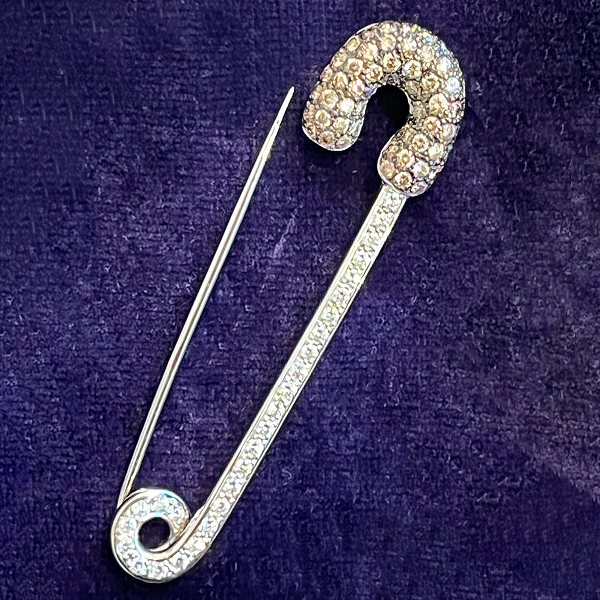
Then there was the punk rock crowd with British fashion designer Vivienne Westwood leading the pack with her clothes that drew upon the dress codes of Victoriana with a modern interpretation. This fashion movement was all about rebellion — dark ripped jeans, dark make-up and black leather with pops of neon color, animal prints and lots of safety pins holding it all together. It was the backlash to the crass consumerism and designer mania that gripped America and Europe. This group favored large silver chains, oversized crosses, skulls, crowns, spikes, multiple strands of pearls, dog collars and mismatched earrings – often all worn together. Punk Rockers also tended to have numerous ear piercings leading to a trend of wearing many different earrings in several holes going up the earlobe. It was a style that mainstreamed during the decade. While much of the jewelry worn by punk rockers was costume or bridge, its influence was felt in fine jewelry and designer apparel, as both drew inspiration from the DNA of punk rock fashion. The influence of punk rock in fashion continues to be seen on runways today.
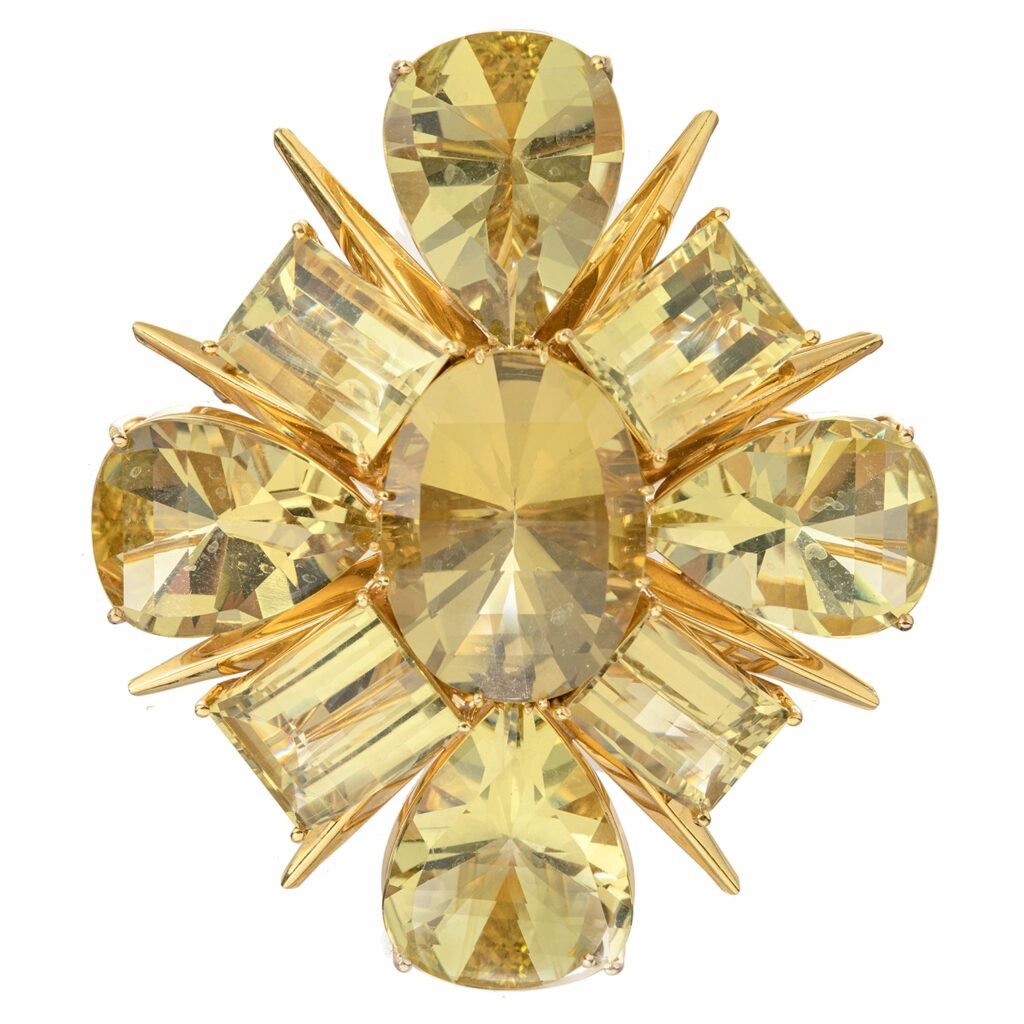
One very important jewelry item of the 1980s was the brooch. One large statement brooch was worn on power suits, but brooches were also worn in more inventive ways. It was not unusual to see people wearing jean jackets covered with small brooches all over the front. While those were often costume jewelry, the look was also found in fine jewelry, when a few small brooches were worn grouped together or scattered across a neckline, shoulder, or lapel.
In the early 1980s diamond prices hit the stratosphere and then crashed back down to earth before recovering by the end of the decade. These price gyrations and the general instability of the diamond market, led designers to use small diamonds to make pavé pieces or to add a highlight of sparkle and light to colored gemstone jewels. What is notable is that diamonds were used more as accents or many small diamonds were used to create a design. The “Tennis Bracelet” was ubiquitous after tennis champion Chris Evert dropped her diamond line bracelet during a match and stopped the game until she found her jewel, which led to the diamond line bracelet being renamed the tennis bracelet. While this event actually happened in 1978, by the 1980s diamond tennis bracelets adorned wrists everywhere.
The fall of the Berlin Wall in November 1989 signaled the official end to the Cold War and brought the decade to a close as the economy nose-dived into a recession and 1980s maximalism gave way to 1990s minimalism.
Featured image (top of page): Princess Diana dances with John Travolta at the White House, November 9, 1985, White House Photographer, White House, Wiki Commons, Public Domain.
Authored by Amber Michelle

